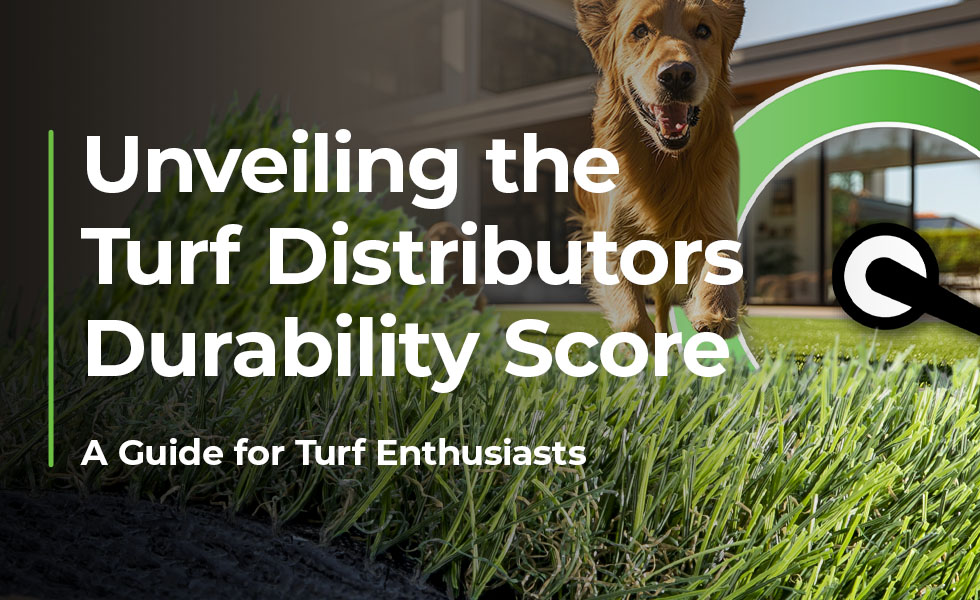
Welcome, turf enthusiasts!
If you’re delving into the world of artificial grass, you’ve probably encountered terms like tuft bind, blade fiber material, denier, Lisport test scores, and face weight.
Wondering how these factors influence the durability of your artificial turf?
Fear not, as we’re about to demystify these terms and introduce you to the Turf Distributors Durability Meter score – a comprehensive measure that incorporates all these factors into a user-friendly Five Factor Algorithm.
The Durability Score Translation

Score of 6-10

Score of 11-15

Score of 16-20

Score of 21+
The 5 Factor Algorithm
Let’s dive into the nitty-gritty of our Durability Score algorithm, where precision meets perfection:
We’ve boiled it down to five specs. No magic, just a smart formula. It’s a straightforward way to show how each factor spec plays a role in determining the Fell Score.
1. Tuft Bind: The Glue that Holds It All Together
Imagine your turf as a patchwork quilt. Tuft bind is the strength of the stitching that holds each piece in place. In the artificial turf world, it refers to how well the grass fibers are secured to the backing. A high tuft bind means a more robust and long-lasting turf, ready to withstand the twists and turns of daily use.
2. Blade Fiber Material: Choosing the Right Grass DNA
Just like natural grass comes in different varieties, artificial grass has its own genetic code – the blade fiber material. This is the stuff that makes your turf look and feel like the real deal. Common materials include polyethylene and polypropylene, each with its unique characteristics. Polyethylene is known for its softness and resilience, making it a popular choice for lush, natural-looking lawns.
3. Denier: The Thickness Factor
Denier is like the thickness of your turf’s individual grass blades. Think of it as the difference between a hair-thin strand and a sturdy rope. A higher denier means thicker and more robust grass blades. So, if you’re looking for turf that can handle a bit of roughhousing, aim for a higher denier to ensure durability.
4. Lisport Test Score: Stress-Testing for Turf Toughness
Picture this as the ultimate turf obstacle course. The Lisport test simulates the wear and tear your artificial grass might face over time. The higher the Lisport test score, the better your turf stands up to the challenge. It’s like getting a report card for your turf’s endurance – the higher the score, the longer it’ll keep that vibrant, green charm.
5. Face Weight: The Density Dilemma
Face weight is like the density of your turf – how many grass fibers are packed into a square yard. A higher face weight often indicates a denser and more luxurious turf. While not the only factor, it contributes to the overall resilience and appearance of your artificial grass.
Turf Distributors Durability Meter Score: A Five Factor Algorithm
Turf Distributors takes the guesswork out of choosing durable artificial turf by employing a Five Factor Algorithm. This algorithm combines the test result numbers of tuft bind, blade fiber material, denier, Lisport test scores, and face weight to calculate a comprehensive Durability Meter score. This score serves as a user-friendly guide for both professionals and consumers, making it easy to understand and choose the perfect artificial grass that not only looks fantastic but also stands the test of time. Happy turfing!
